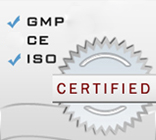
ELISA Kits
- • Anemia ELISA kits
- • Allergy ELISA kits
- • Autoimmune Disease kits
- • Bone Metabolism ELISA kits
- • Blood bank ELISA kits
- • Cancer ELISA kits
- • Cardiac Markers ELISA kits
- • Diabetes Assays ELISA kits
- • Drug test ELISA kits
- • Fertility ELISA kits
- • Food ELISA kits
- • Infectious Disease ELISA kits
- • Other ELISA Kits
- • Parasitology ELISA kits
- • Steroid ELISA kits
- • Thyroid ELISA kits
Rapid Tests
- • Allergy Rapid tests
- • Bone Metabolism
- • Cancer Rapid tests
- • Cardiac markers Rapid tests
- • Drug Tests
- • Fertility Rapid tests
- • Hepatitis Panel
- • Infectious Disease & other tests
- • Other
- • Ovulation Rapid tests
- • Pregnancy tests
- • Urine Reagent Strips tests
IFA Kits
Chemiluminescence Immuno Assays
- • Allergy Assays
- • Autoimmune Thyroid Assays
- • Cardio-Vascular Monitoring
- • Diabetes Assays
- • Fertility Assays
- • Growth Deficiency
- • Infectious Disease Assays
- • Others
- • Steroid Assays
- • Thyroid Assays
- • Tumor Marker Assays
Serology Tests
- • ASO (Anti-Streptolysin-O)
- • CRP (C-Reactive Protein)
- • Mono (Infectious Mononucleosis)
- • RF (Rheumatoid Factor)
- • RPR (Rapid Plasma Reagin)
- • SLE (Systemic Lupus Erythematosus)
Instrumentation



Estradiol CLIA kit - (Chemiluminescence Immuno Assay)
| Name |
Estradiol CLIA kit - (Chemiluminescence Immuno Assay) |
|---|---|
| Category Name | Steroid Assays |
| Test | 96 |
 |
 |
 |
Estradiol CLIA kit - (Chemiluminescence Immuno Assay) description:
Chemiluminescence Immunoassay (CLIA) detection using microplate luminometers provides a
sensitive, high throughput, and economical alternative to conventional colorimetric methodologies, such as Enzyme-linked immunosorbent assays (ELISA). ELISA employs a label enzyme and a colorimetric substrate to produce an amplified signal for antigen, haptens or antibody quantitation. This technique has been well established and considered as the technology of choice for a wide variety of applications in diagnostics, research, food testing, process quality assurance and quality control, and environmental testing. The most commonly used ELISA is based on colorimetric reactions of chromogenic substrates, (such as TMB) and label enzymes. Recently, a chemiluminescent immunoassay has been shown to be more sensitive than the conventional colorimetric method(s), and does not require long incubations or the addition of stopping reagents, as is the case in some colorimetric assays. Among various enzyme assays that employ lightemitting reactions, one of the most successful assays is the enhanced chemiluminescent immunoassay involving a horseradish peroxidase (HRP) labeled antibody or antigen and a mixture of chemiluminescent substrate, hydrogen peroxide, and enhancers. The CLIA Kits are designed to detect glow-based chemiluminescent reactions. The kits provide a broader dynamic assay range, superior low-end sensitivity, and a faster protocol than the conventional colorimetric methods. The series of the kits covers Thyroid panals, such as T3, T4, TSH, Hormone panels, such as hCG, LH, FSH, and other panals. They can be used to replace conventional colorimetric ELISA that have been widely used in many research and diagnostic applications. Furthermore, with the methodological advantages, Chemiluminescent immunoassay will play an important part in the Diagnostic and Research areas that ELISAs cannot do. The CLIA Kits have been validated on the MPL2 microplate luminometer from Berthold Detection System, Lus2 microplate luminometer from Anthos, Centro LB960 microplate luminometer from Berthold Technologies, and Platelumino from Stratec Biomedical Systems AG. We got acceptable results with all of those luminometers.
Estradiol (E2) is a C18 steroid hormone with a phenolic A ring. This steroid hormone has a molecular
weight of 272.4. It is the most potent natural Estrogen, produced mainly by the ovary, placenta, and in
smaller amounts by the adrenal cortex, and the male testes. Estradiol (E2) is secreted into the blood stream where 98% of it circulates bound to sex hormone binding globulin (SHBG). To a lesser extent it is bound to other serum proteins such as albumin. Only a tiny fraction circulates as free hormone or in the conjugated form. Estrogenic activity is effected via estradiol-receptor complexes which trigger the appropriate response at the nuclear level in the target sites. These sites include the follicles, uterus, breast, vagina, urethra, hypothalamus, pituitary and to a lesser extent the liver and skin. In non-pregnant women with normal menstrual cycles, estradiol secretion follows a cyclic, biphasic
pattern with the highest concentration found immediately prior to ovulation. The rising estradiol
concentration is understood to exert a positive feedback influence at the level of the pituitary where it
influences the secretion of the gonadotropins, follicle stimulating hormone (FSH), and luteinizing
hormone (LH), which are essential for follicular maturation and ovulation, respectively. Following
ovulation, estradiol levels fall rapidly until the luteal cells become active resulting in a secondary gentle
rise and plateau of estradiol in the luteal phase. During pregnancy, maternal serum Estradiol levels
increase considerably, to well above the pre-ovulatory peak levels and high levels are sustained
throughout pregnancy. Serum Estradiol measurements are a valuable index in evaluating a variety of menstrual dysfunctions such as precocious or delayed puberty in girls and primary and secondary amenorrhea and menopause. Estradiol levels have been reported to be increased in patients with feminizing syndromes, gynaecomastia and testicular tumors. In cases of infertility, serum Estradiol
measurements are useful for monitoring induction of ovulation following treatment with, for example,
clomiphene citrate, LH-releasing hormone (LH-RH), or exogenous gonadotropins. During ovarian
hyperstimulation for in vitro fertilization (IVF), serum estradiol concentrations are usually monitored
daily for optimal timing of human chorionic gonadotropin (hCG) administration and oocyte collection.
The Estradiol (E2) EIA kits are designed for the measurement of total Estradiol in human serum or
plasma.
The E2 EIA is based on the principle of competitive binding between E2 in the test specimen and E2-
HRP conjugate for a constant amount of rabbit anti-Estradiol. In the incubation, goat anti-rabbit IgGcoated wells are incubated with 25 μl E2 standards, controls, patient samples, 100 μl Estradiol-HRP
Conjugate Reagent and 50 μl rabbit anti-Estradiol reagent at room temperature (18-25 �C) for 90 minutes. During the incubation, a fixed amount of HRP-labeled E2 competes with the endogenous E2
in the standard, sample, or quality control serum for a fixed number of binding sites of the specific E2
antibody. Thus, the amount of E2 peroxidase conjugate immunologically bound to the well progressively decreases as the concentration of E2 in the specimen increases. Unbound E2 peroxidase conjugate is then removed and the wells washed. A solution of chemiluminescent substrate is then added and read relative light units (RLU) with a Luminometer. The intensity of the emitting light is proportional to the amount of enzyme present and is inversely related to the amount of unlabeled E2 in the sample. By reference to a series of E2 standards assayed in the same way, the concentration of E2 in the unknown sample is quantified.
Home > Chemiluminescence Immuno Assays > Steroid Assays > Estradiol CLIA kit - (Chemiluminescence Immuno Assay)
ELISA kits - Rapid tests- Drug tests- Pregnancy test - IFA kits - CLIA assays - Serology tests - Instrumentation
©1992 Diagnostic Automation/Cortez Diagnostics Inc. All rights reserved.








